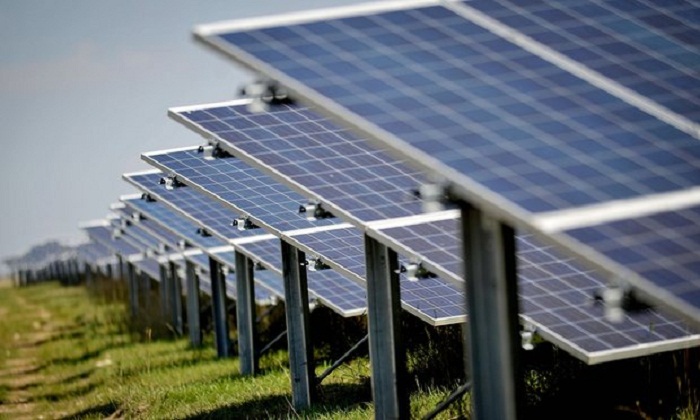Almost without exception, European markets slipped down the rankings while emerging economies across Latin America, Asia and Africa took their place near the top of the league table thanks to government plans to deploy green energy as a fast, relatively cheap way to develop their grids.
“European markets appear to be scaling back their ambitions as they address the challenges of marrying up increasingly mainstream renewables with a legacy of centralised conventional power generation,” EY said at the time.
But rather than being the start of a long, painful descent for Europe – historically the world’s frontrunner in renewable energy development – it now seems that the worrying report in May may have been a temporary blip.
The latest Renewable Energy Country Attractiveness Index (RECAI), released today, shows many European nations, including France, Belgium, Sweden, Ireland, Norway and Finland, all moved up the rankings thanks to a flurry of new renewables programmes that are helping to drive investment across the continent.
For example, France, moved up a position to reach 7th in the global rankings, thanks largely to a new national plan to tender 3GW of new solar capacity over the next three years, which will boost its solar capacity to more than 10GW by 2018. The country is also embarking on an ambitious project to pave 1,000km of roads in the country with solar panels. Construction work has already begun on the Normandy factory where the panels will be built, with the first shipments due to hit the streets next year.
Meanwhile, in Germany significant investment is going into grid flexibility to allow higher levels of renewables to come online, according to Ben Warren, EY global power & utilities corporate finance leader and RECAI chief editor. “The effort that’s going on in Germany is how to deploy more renewables and manage the stresses on the grid,” he told BusinessGreen, describing how a “buoyant” energy storage market is emerging along with new business models for peak shifting and demand shifting.
“What we are seeing in Europe is an increasing effort to get more renewables deployed and integrate that into the grid in markets where there are already high levels of deployment like Germany, and also new models for the procurement of renewables like we are seeing in France, to realise as competitive sourcing of renewable energy as possible,” he explained.
But there is one country that challenges the narrative of a European renewable energy bounceback. The UK, which made headlines in September last year after it fell out of the top 10 of EY’s rankings in for the first time, continues its recent slide, this month falling to an all-time low of 14th.
According to Warren, the UK’s renewables sector is in a state of “absolute paralysis”. Still reeling from a number of rapid policy changes last year, the latest RECAI highlights the further damage to clean energy investor confidence caused by the uncertainty around Brexit and the closure of the Department of Energy and Climate Change.
This has meant the pipeline of renewables projects in the UK has slowed to a trickle, Warren warns. Instead he said the government is focusing on so-called “mega-infrastructure” projects such as Hinkley Point C and a third runway at Heathrow – a strategy he said is pushing Britain in the opposite direction to the rest of Europe.
“It’s a mega infrastructure play that the UK government is tending to focus on, rather than believing the vision of a decentralised energy economy with a much broader fabric of job creation in the energy landscape,” he said. “The market is full of businesses and people that are really innovative and really mobile, but the UK government is not really doing anything to help facilitate the development of the market.”
And elsewhere, in the green bonds market, the UK is also not performing as well as it should, Warren believes. Despite the world being on track for a record year for green bond issuances, the EY report shows the UK achieving only a middling ranking compared to the rest of Europe. Since 2007 the UK has issued 1,840 renewable energy green bonds – more than Italy, Ireland, Denmark and Estonia but less than half that of the Netherlands and less than a quarter of the number issued by Luxembourg, France and Germany.
Although this is partly down to a lack of projects in the UK that need financing – a problem amplified by the diminishing project pipeline – Warren also believes it is a sign London is not living up to its potential to become a hotbed for green bonds. “Partly it’s because we haven’t got the projects that are stimulating demand for liquidity, but as a global financial centre London should be doing way more around new issuances,” he said. “If we’re not able to create the projects that stimulate the demand we should still be in a position where we can at least harness some of the activity.”
To some extent the news that the UK has slipped even further down the RECAI is not surprising, given the uncertainty pervading every sector of the economy following the referendum vote. The government and the clean energy industry will no doubt hope that the much-anticipated new low carbon industrial strategy, new wave of clean energy auctions, and clarification on post-2020 financial support for the sector will all help drive a revival in the market from 2017 onwards.
But the latest rankings underline the rate at which the UK clean energy market is slipping behind our European rivals, who are now embarking on concerted efforts to push the boundaries of renewable integration into the grid. We may still have a relatively robust offshore wind sector, but next to Europe the cracks in the UK’s energy transition are beginning to show.
More about:
















































